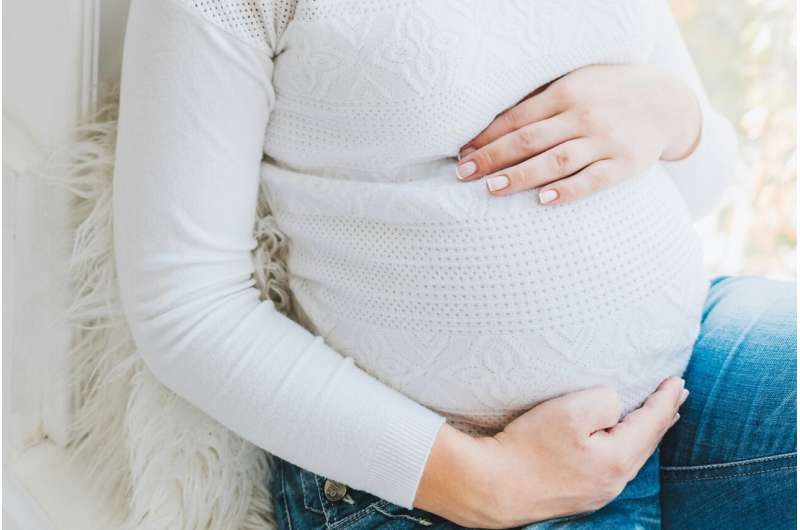This article has been reviewed according to Science X's editorial process and policies. Editors have highlighted the following attributes while ensuring the content's credibility:
fact-checked
trusted source
proofread
Women may face unique obstacles while seeking treatment for opioid use

Women experiencing opioid-use disorders may face unique challenges accessing treatment, according to a new study led by Penn State researchers. The study—published in the journal Women's Health—provides new insight into how pregnancy and parenting can make getting medications for these disorders particularly difficult.
The researchers found that among pregnant women, common barriers to receiving medication treatment included doctors' hesitance to prescribe these medications to pregnant patients; limited access to resources in rural areas; and difficulty navigating complex, decentralized health systems.
For women who already have children, the researchers found that a lack of childcare during appointments and meetings, fear of losing custody of or access to their children, and prioritizing their children's needs above their own were common obstacles to accessing medication.
Kristina Brant, assistant professor of rural sociology in the College of Agricultural Sciences and co-author of the study, said the findings underline the complex challenges facing these women and their children—including how the fear of losing custody of their children can prevent mothers from seeking treatment, which ultimately can be harmful for children over time.
"It's important to design systems that prioritize families' needs and allow mothers to seek help while not fearing that it will cause a severing of their relationships with their children," Brant said. "Ultimately, this will also ensure that children get the services they may need as well."
Medications used to treat opioid use disorder (MOUD)—such as methadone and buprenorphine—have been shown to be effective at reducing overdose deaths and improving quality of life generally, the researchers said, and are considered safe to take during pregnancy.
But the researchers added that in 2021, only 22.1% of people with opioid-use disorder across the country received these medications, suggesting there are barriers in place preventing both men and women from receiving care.
Abenaa Jones, Ann Atherton Hertzler Early Career Professor in Health and Human Development and principal investigator on the paper, said that while obstacles exist for people of all genders, women may experience unique difficulties.
"Previous research has illustrated that women who use drugs have different needs than men who use drugs—often centered around gendered responsibilities such as child-rearing, parenting and childcare," Jones said. "We wanted to examine this among women who use drugs and have a history of criminal legal involvement, as well as professionals who work with affected women, to develop multifaceted solutions to engage women in substance-use treatment."
For the study, the researchers interviewed 20 women who have lived with an opioid-use disorder, 10 criminal justice professionals who have worked with women with opioid-use disorder and 12 substance-use disorder treatment professionals who have worked with women who have received MOUD. All interviewees were based in Pennsylvania.
Interviews took place over the phone and focused on the women's personal experiences with MOUD or the professionals' experiences working with women receiving the treatment.
Hannah Apsley, a graduate student in human development and family studies and lead author on the paper, said the findings could point to possible solutions to the barriers keeping women from treatment. For example, with a lack of treatment facilities and programs geared towards women with children, supporting the expansion of programs geared towards mothers and their kids could help increase pathways to care.
"Being unable to bring a young child to an inpatient facility can be a huge deterrent for a mother who is contemplating seeking treatment," Apsley said. "Apart from attending inpatient treatment, seeking medications for opioid-use disorder can also be time-consuming, often involving frequent counseling sessions. Being unable to afford child care in these situations can also be a barrier."
Because the fear of losing custody of their children is another factor that prevents some women from seeking treatment, the researchers said this could be mitigated by both the child welfare and criminal justice systems working together to promote and prioritize parental access to substance-use disorder treatment.
"Having less punitive access to treatment would perhaps then lessen mothers' fear of losing custody of their children, as well as lessen instances of child maltreatment," Apsley said.
Finally, the researchers said that making care easier to access could also be beneficial. For women already attending prenatal or postpartum appointments, integrating substance-use treatment into those appointments could make it easier for patients instead of requiring them to make additional trips. For women in rural areas—where resources are sparse and substance-use stigma can be high—telehealth appointments may be a solution.
In the future, the researchers said additional studies could further examine the experiences of a more diverse group of women, particularly women of color, from multiple locations across the country.
More information: Hannah B Apsley et al, Pregnancy- and parenting-related barriers to receiving medication for opioid use disorder: A multi-paneled qualitative study of women in treatment, women who terminated treatment, and the professionals who serve them, Women's Health (2024). DOI: 10.1177/17455057231224181





















